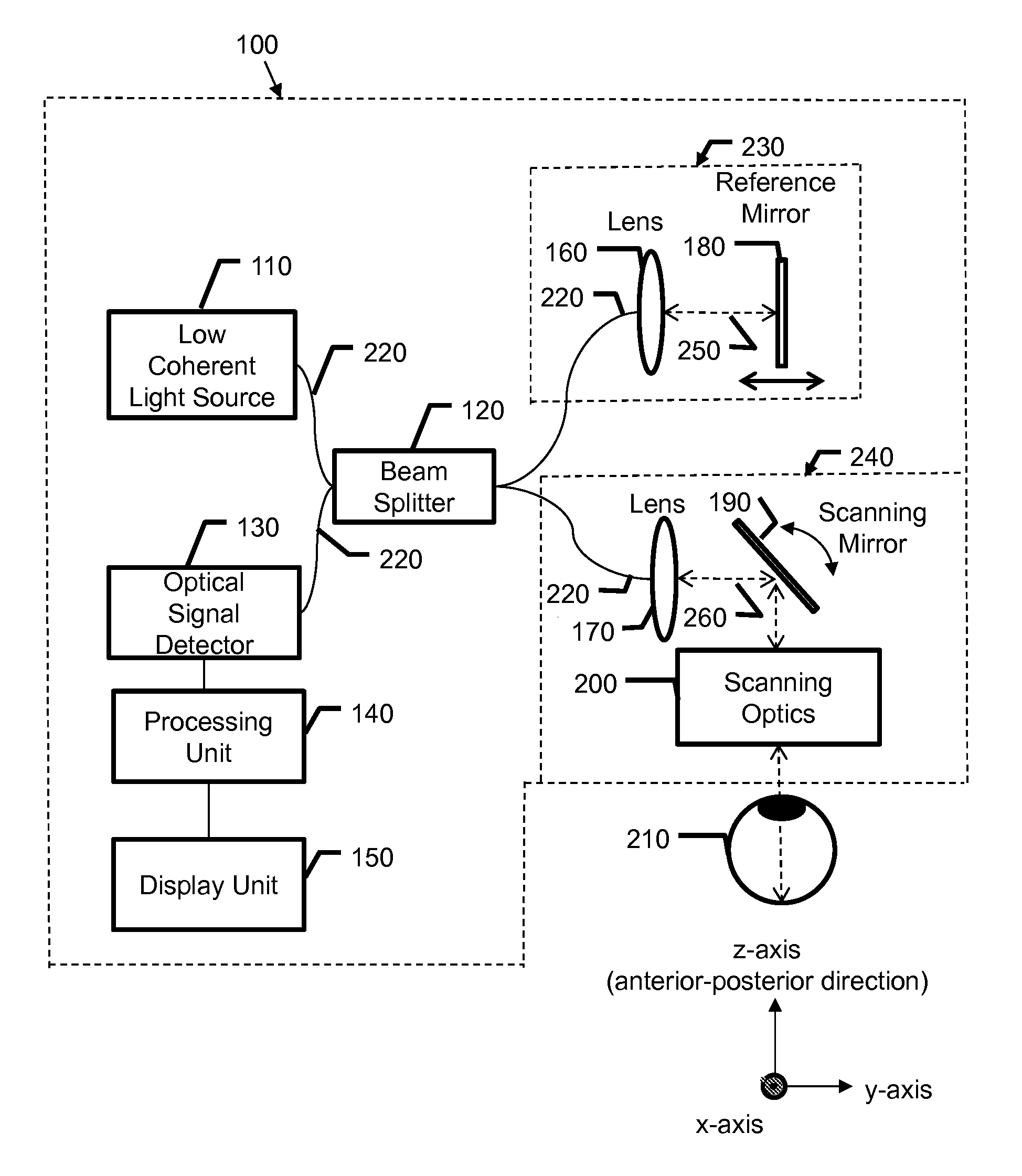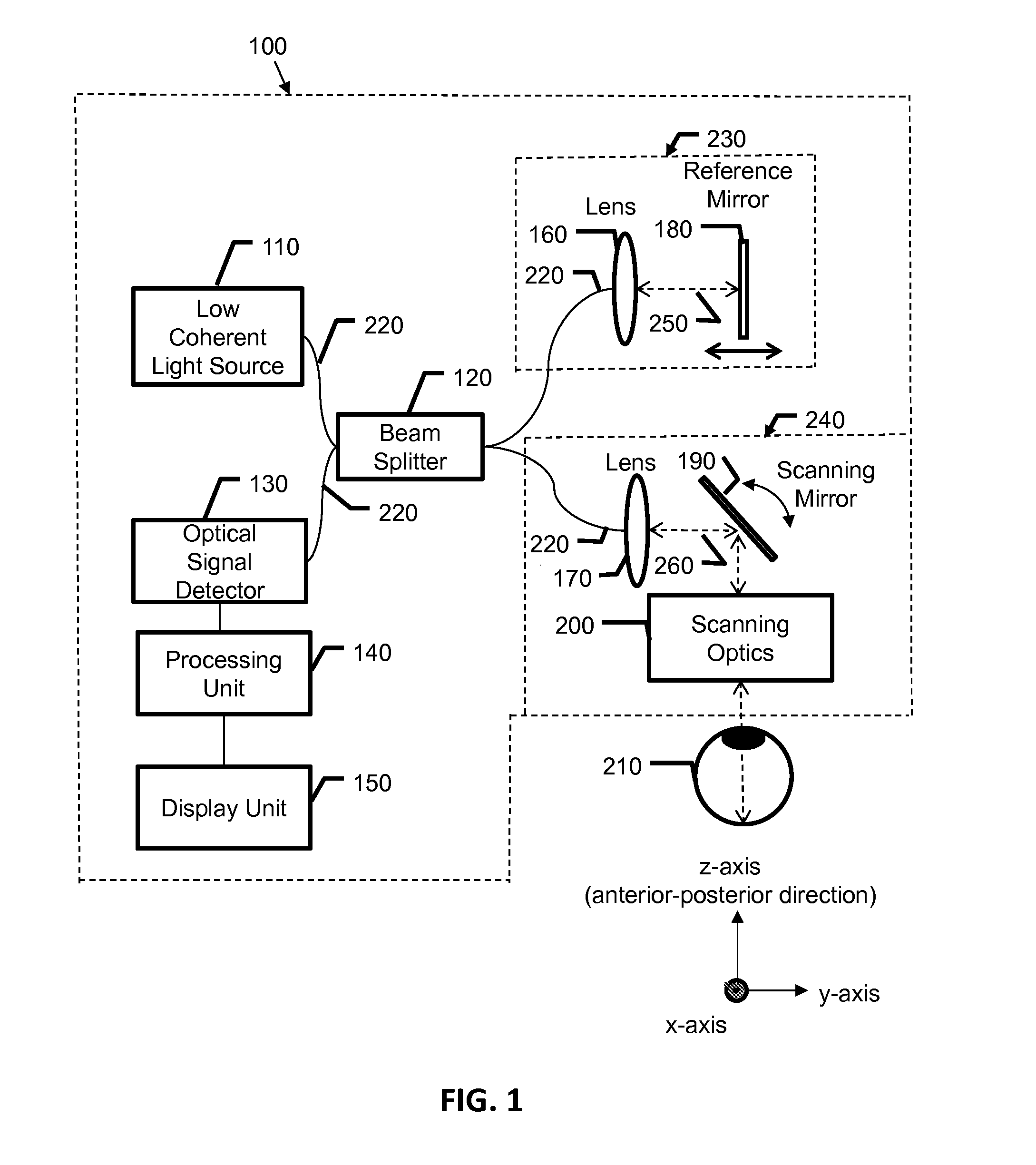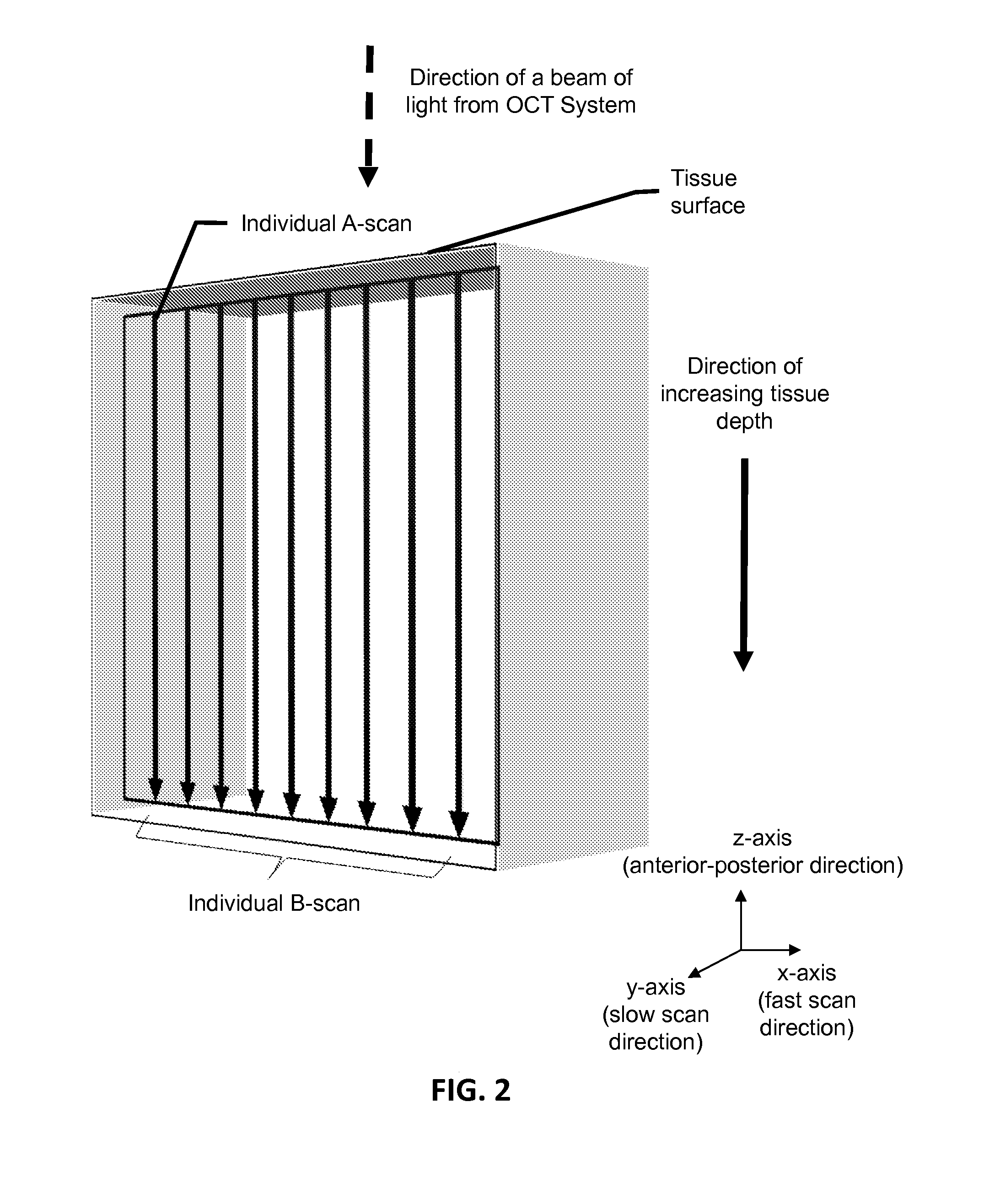Optical coherence tomography (OCT) system with phase-sensitive b-scan registration
a technology phase-sensitive bscan, which is applied in the field of optical coherence tomography, can solve the problems of limited technique, slowest motions become obscured by noise, and current oct technology may not provide adequate visualization of retinal and choroidal microvasculature, etc., and achieve the effect of reducing noise effects
- Summary
- Abstract
- Description
- Claims
- Application Information
AI Technical Summary
Benefits of technology
Problems solved by technology
Method used
Image
Examples
example 1
Calculating the Total Phase Error by Using the Calculated Phase Differences
[0090]The total phase error may be calculated by using any method. The total phase error may be calculated by using the calculated phase differences. For example, the total phase error may be calculated by using the following equations.
ΔØ1,2(x,z,Δz)=mod(Ø1(x,z)−Ø2(x,z+Δz),2π) Equation 1
Where in Equation 1, Ø1(x,z) is the phase of a data point at (x,z) location belonging to the first formed B-scan, Ø2(x, z+Δz) is the phase of a data point at (x,z+Δz) location belonging to the second formed B-scan axially shifted by a distance of Δz, mod is the modulo of the phase difference between 0 and 2π, and ΔØ1,2(x,z,Δz) is the phase difference between the phase of the data point of the first formed B-scan and the phase of the data point of the second formed B-scan.
[0091]The calculated ΔØ1,2(x,z,Δz) values for each data point provide a phase difference data point. These phase difference data points are used to calculate ...
example 2
Finding the Total Phase Error Minimum
[0097]The phase difference may be found by any method. For example, first phase difference may be calculated by using the first formed B-scan and the second formed B-scan as acquired by the OCT system, without shifting the B-scan pairs relative to each other. That is, the first phase difference may be calculated for no shift.
[0098]Other phase differences may be calculated by first shifting the second formed B-scan, relative to the first formed B-scan, along the z-axis. The shift may be one pixel. For example, the calculating a phase difference may comprise choosing a number of shifts, T on one of the B-scan pairs (e.g. the first formed B-scan), where T is an integer equal to or greater than 3. For example, T may be 3 shifts, 4 shifts, 5 shifts, 10 shifts, or 100 shifts.
[0099]The shifting may be done in any direction along the z-axis. One such direction is hereafter referred as “positive direction” and the other direction opposite to the positive ...
example 3
Calculating Cumulative Axial Shift for Each B-Scan within a B-Scan Cluster
[0103]The cumulative axial shift for each B-scan within a B-scan cluster may be calculated by using any method. A reference B-scan may be chosen and other B-scans within the cluster may be aligned with this reference B-scan. This reference B-scan may be any B-scan within a B-scan cluster. For example, the reference B-scan may be the first formed B-scan belonging to the B-scan cluster. Following example is explained with respect to this first formed B-scan. However, any other B-scan may be chosen to achieve the same end result.
[0104]In this method, for example, each two B-scans proximate (i.e. adjacent) to each other may form a B-scan pair. The reference B-scan may be the first formed B-scan belonging to the B-scan cluster. A location of the minimum of the total phase error for each B-scan pair may be determined in the manner disclosed in Example 2. This is the optimal shift, Δzoptimal,j between the B-scans for...
PUM
 Login to View More
Login to View More Abstract
Description
Claims
Application Information
 Login to View More
Login to View More - R&D
- Intellectual Property
- Life Sciences
- Materials
- Tech Scout
- Unparalleled Data Quality
- Higher Quality Content
- 60% Fewer Hallucinations
Browse by: Latest US Patents, China's latest patents, Technical Efficacy Thesaurus, Application Domain, Technology Topic, Popular Technical Reports.
© 2025 PatSnap. All rights reserved.Legal|Privacy policy|Modern Slavery Act Transparency Statement|Sitemap|About US| Contact US: help@patsnap.com



